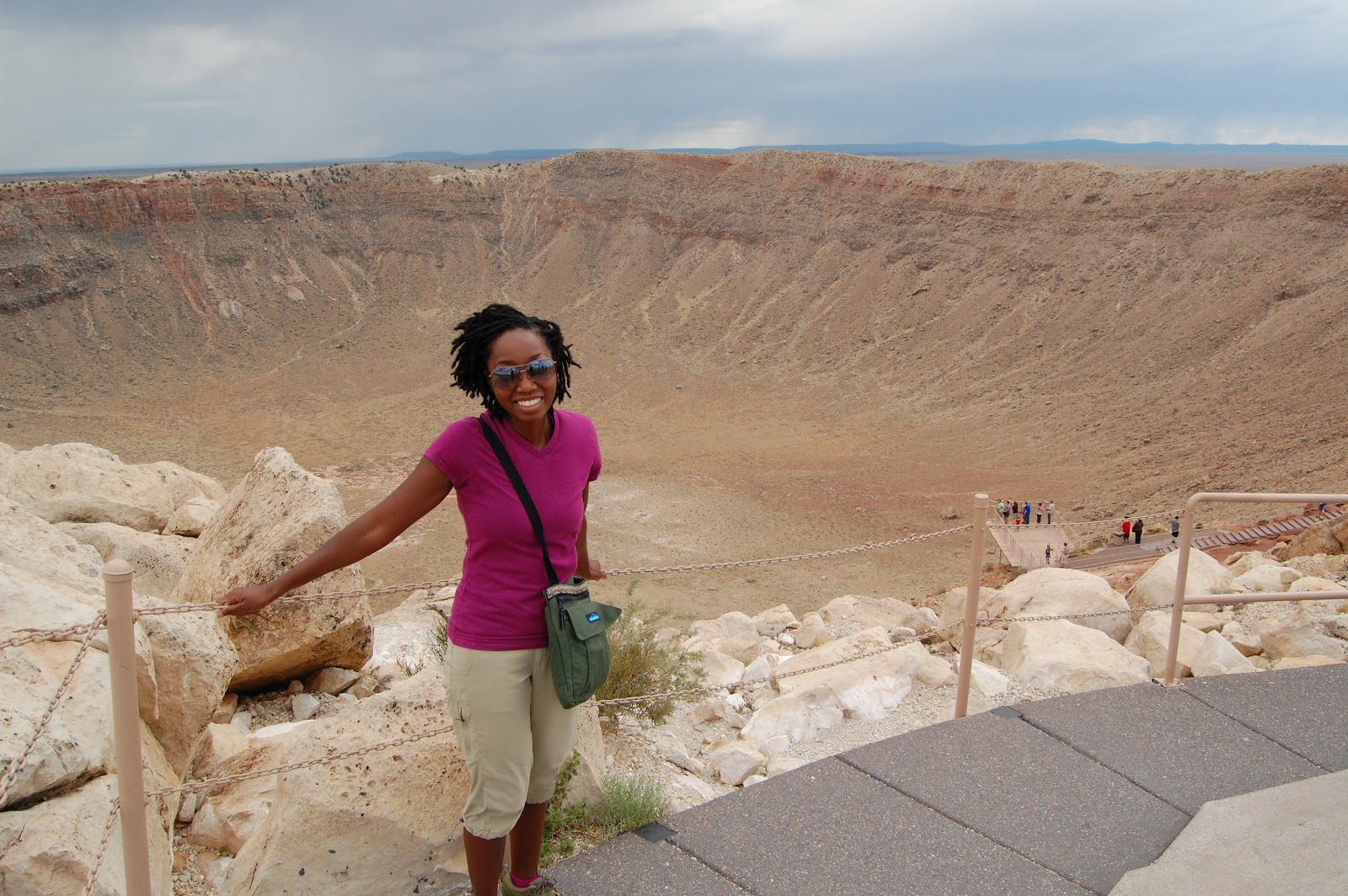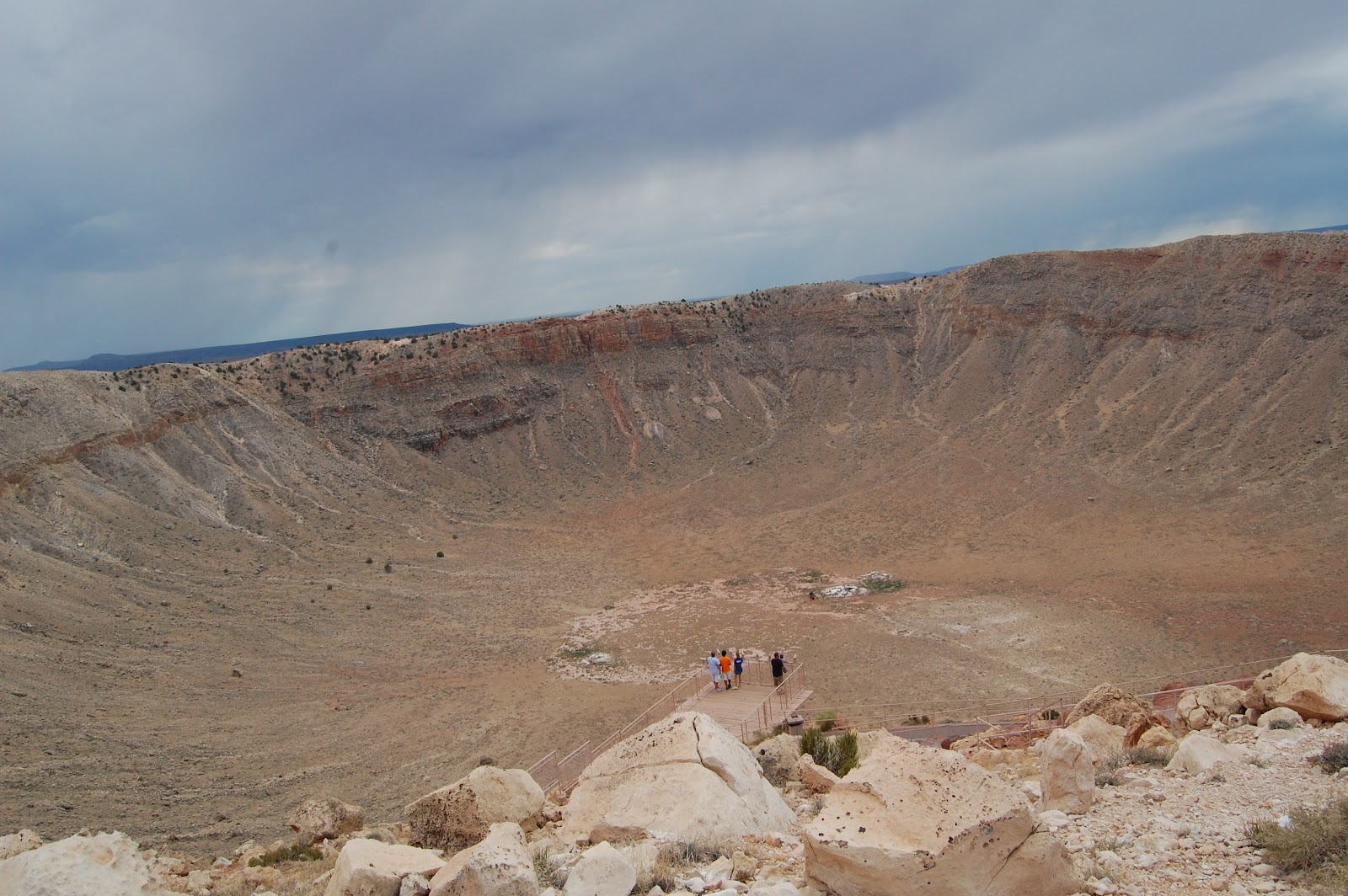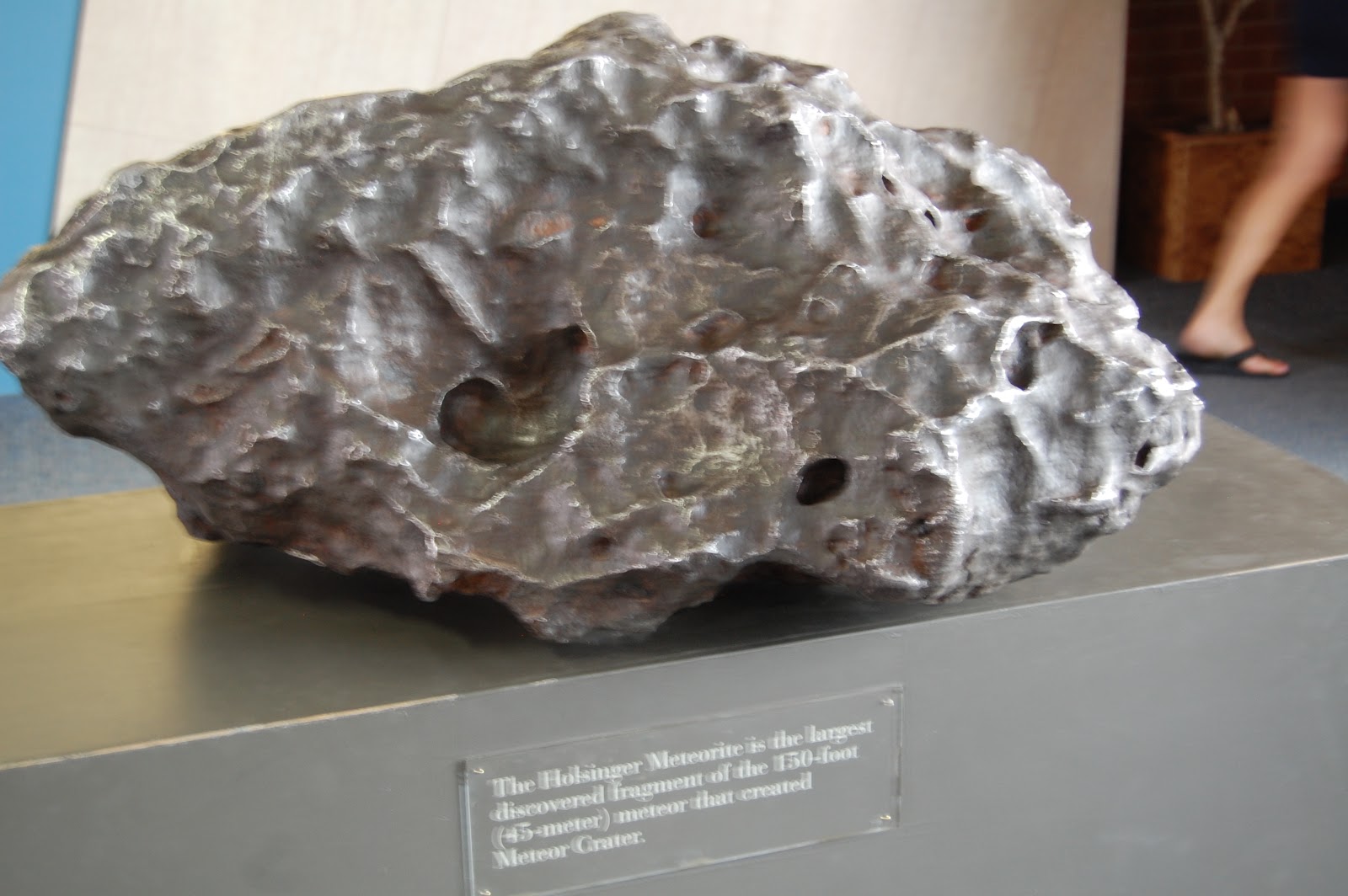 |
| Me, fighting the wind, at the top observation deck. |
After leaving the Petrified National Forest and Painted Desert, we took I-40 south towards the Meteor Crater, also known as Barringer Crater. It’s an uneventful drive, to be honest, dotted with cheap tourist traps and sleepy towns. (“What’s with the all the freakin’ dinosaur statues?” My fiancé was nearly pulling his hair out at the sight of them by the end of the drive.) Once you turn to Meteor Crater Drive, there is another long stretch through the flat lands that are accentuated by round signs that pop up from the terrain advertising the park, facts about the meteor, and other fun desert weirdness.
The rim of the crater rises about 15 stories from the landscape, broad and flat like a natural plateau. The entrances to the lookout points and museum require an ascent (via stairs or an elevator) of about two stories. Even with the guardrails I was afraid of losing my balance and tumbling into the crater somehow; my small frame wasn’t much against the storm winds blowing in from the south. I clung to the handrails and made my way towards the top of the lookout point. The storm cell’s ominous clouds serve as a backdrop to all of our photos.
 |
| Full view of the crater, from museum doorway. |
The view is breathtaking. The massive crater—two miles around, one mile across, and over 500 feet deep—burrows into the earth with an eerie beauty. When it landed, it would have killed everyone and everything for miles but now it’s harmless and awe inspiring. Though it’s hard to tell from the observation deck, the crater isn’t quite round. The edges are quite squared, which is more easily seen in an aerial view; some believe these corners is due to jointing in the strata.
In the depths of the crater are an array of strange materials placed there by early researchers and astronauts in training: a grill, a 6 foot tall astronaut with a flag (which is barely visible from the rim) and a small structure. I thought those things were a bit distracting to be honest and wish that they would’ve removed everything but the astronaut maybe. Aside from being funny, he gives viewers a good point of reference for depth perception. The other items just looked like trash at the bottom of a bowl.
 |
| A piece of the troublemaker! |
My fiancé and I descended the staircase (hold on!) and passed briefly through the museum. I recommend spending more time in the museum especially if you have pre-teen and teen. Kids in that age group really seemed to get the most out of the exhibits. They were informative and had a few interactive elements that I liked. My favorite was a chunk of The Holsinger meteorite that formed the crater. I wish to God that I could’ve tried picking it up, just for fun, to get a better idea of the size and mass of the meteor that hit the earth so long ago. (Note: don’t try picking it up. You can’t. You’ll probably be arrested, aside from looking really stupid.)
I’d recommend a few of these tips to fellow travelers:
-Don’t rush. Giving yourself time to soak up the natural beauty around you is part of the fun. If you’re in a hurry, it’s easy to see the painted desert as some colorful hills and the meteor crater as a hole in the ground. Stop, think, and seriously enjoy them!
-Eat a lot before you set out. The food options are few and far in between. Stopping in Flagstaff and Winslow are your best bets but even then it’s slim pickings, especially for those with dietary restriction or a hatred for chain fast-food establishments.
-The informative stuff matters. Take the time to watch the videos, read the placards and whatnot. Understanding what you’re looking at enhances your experience exponentially.



